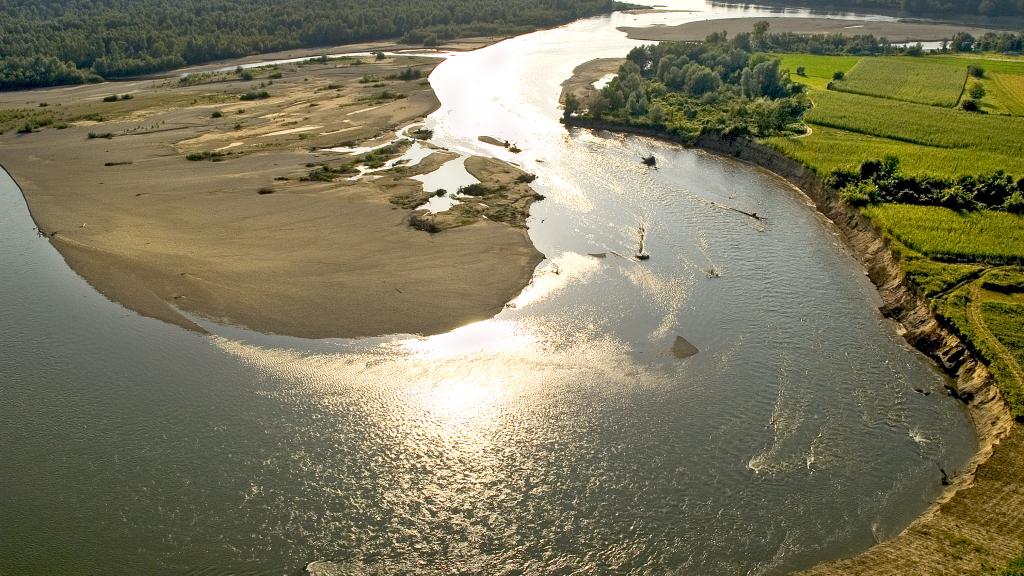Bosnia-Herzegovina

The waters of Bosnia and Herzegovina are split between the Danube River Basin District and the Adriatic Sea Basin. Some 40.2% of the Sava river sub-basin, the second largest sub-basin of the Danube River Basin, lies in Bosnia and Herzegovina. The rest of the watershed is shared by Croatia, Serbia and Slovenia.
Landscape, climate and water flow
The central part of Bosnia and Herzegovina is mountainous with peaks ranging from 500 to 2,000 metres above sea level. The watercourses belonging to the Danube River Basin in Bosnia and Herzegovina – the Sava and its tributaries – are located at the lowest part of the country, ranging from less than 200 metres above sea level at the lower tributaries, to 500 metres at the upper tributaries.
The Sava River runs 345 km into Bosnia and Herzegovina, extending from Croatia at the mouth of the Una River and exiting at the mouth of the Drina River. The main watercourses that make up the Sava
River Sub-basins – and thus the Danube River Basin District in Bosnia and Herzegovina – are the Una, Vrbas, Bosna and Drina rivers.
The mountainous, central part of the country is characterized by a typical continental and mountain climate similar to Alpine regions with severe winters where temperatures can drop to between -24 °C to -34 °C. The average rainfall in this area ranges from 1,000 to 1,200 l/m², with the highest quantities usually occuring in November and the lowest in February. Snowfall is also abundant, especially at higher elevations. The whole territory north of the central mountains has a moderate-continental climate with rather severe winters and warm summers. The average annual precipitation is lower than in the central part – ranging from 800-1,100 l/m².
Natural highlights
The wetland and pond ecosystems of Bardača are located on the left bank of the Vrbas River immediately before it joins the Sava River. The Bardača complex covers 3,400 ha and belongs to an alluvial plain created of sediments of the Vrbas and Sava Rivers. The Bardača complex is a unique wetland-swamp system. Bardača has a high level of biodiversity; aquatic plants and dense vegetation, which provides a habitat for around 178 different bird species.
Manmade Impacts
There are 12 hydropower plants in the Sava River Sub-basin, all of which are located on tributaries. Many plants are shared with neighbouring countries, as the rivers form natural borders between them. Moreover, nearly the entire length of the Sava River in Bosnia and Herzegovina is used for navigation, although it has not been identified as an international navigation course.
Pollution
Today, none of Bosnia and Herzegovina’s settlements containing over 10,000 ES have a treatment facility for wastewaters, meaning that all settlements over this size are also significant sources of pollution.
All watercourses should reach ‘Good Ecological Status’ by 2015 with the exception of the four water bodies on the Bosna River. All bodies under pressure were classified as ‘Exposed to risk in the first approximation’. The insufficiency of such an approach was due to the inadequate connection between the pressures and impacts, in terms of quantity of water, sum loads of several less significant pressures in the water body which exceed the threshold of a significant pressure, and upstream pressures (according to data from before 1990).
Of these 22 groundwater bodies, 6 are considered to be ‘at risk’ due to human intervention, 4 are at risk of both quantity (due to over extraction) and quality, while the rest are threatened with quality risk only. Additionally, 4 groundwater bodies have insufficient data to estimate status.
For detailed information on the above, download the fact sheet below.





